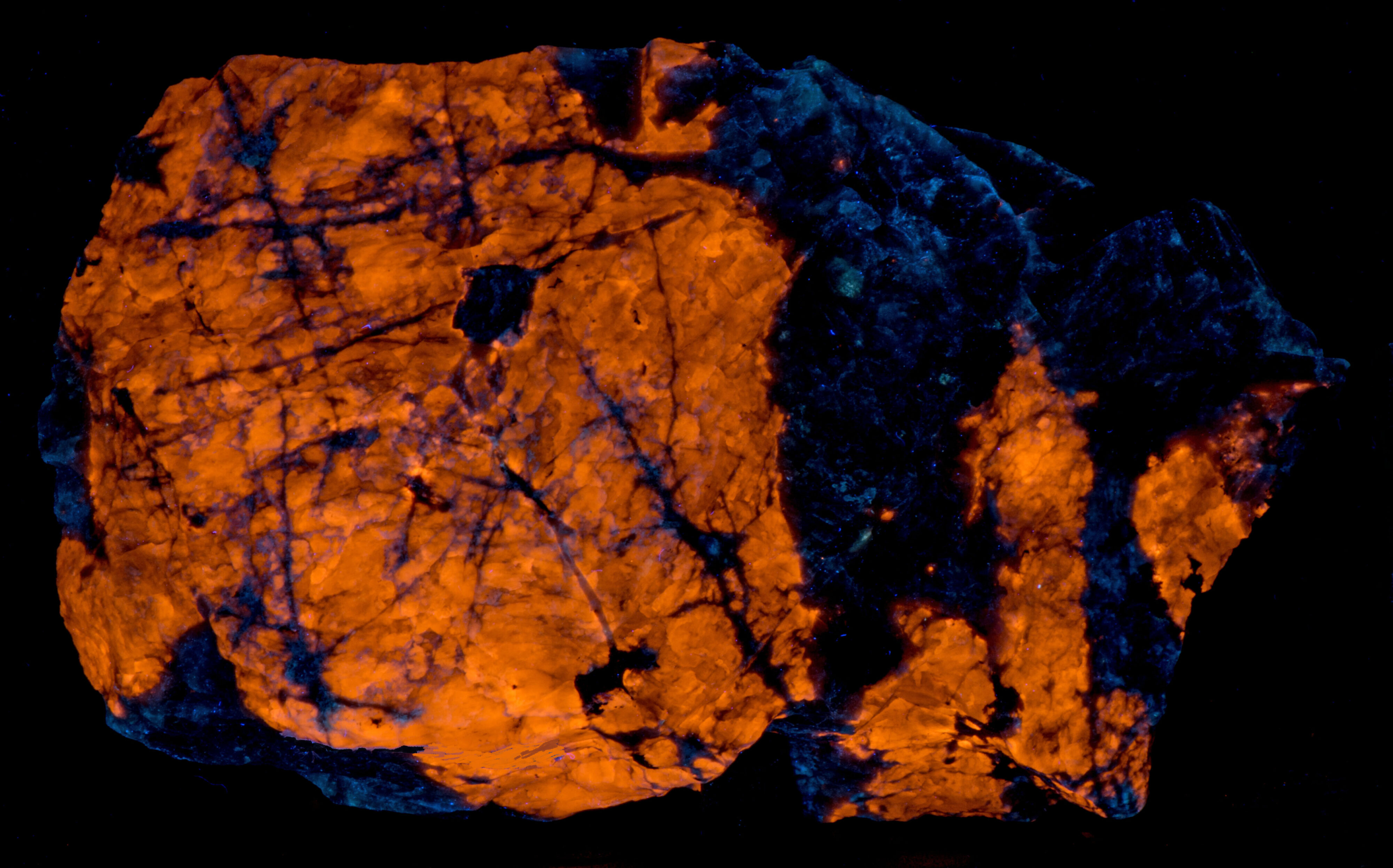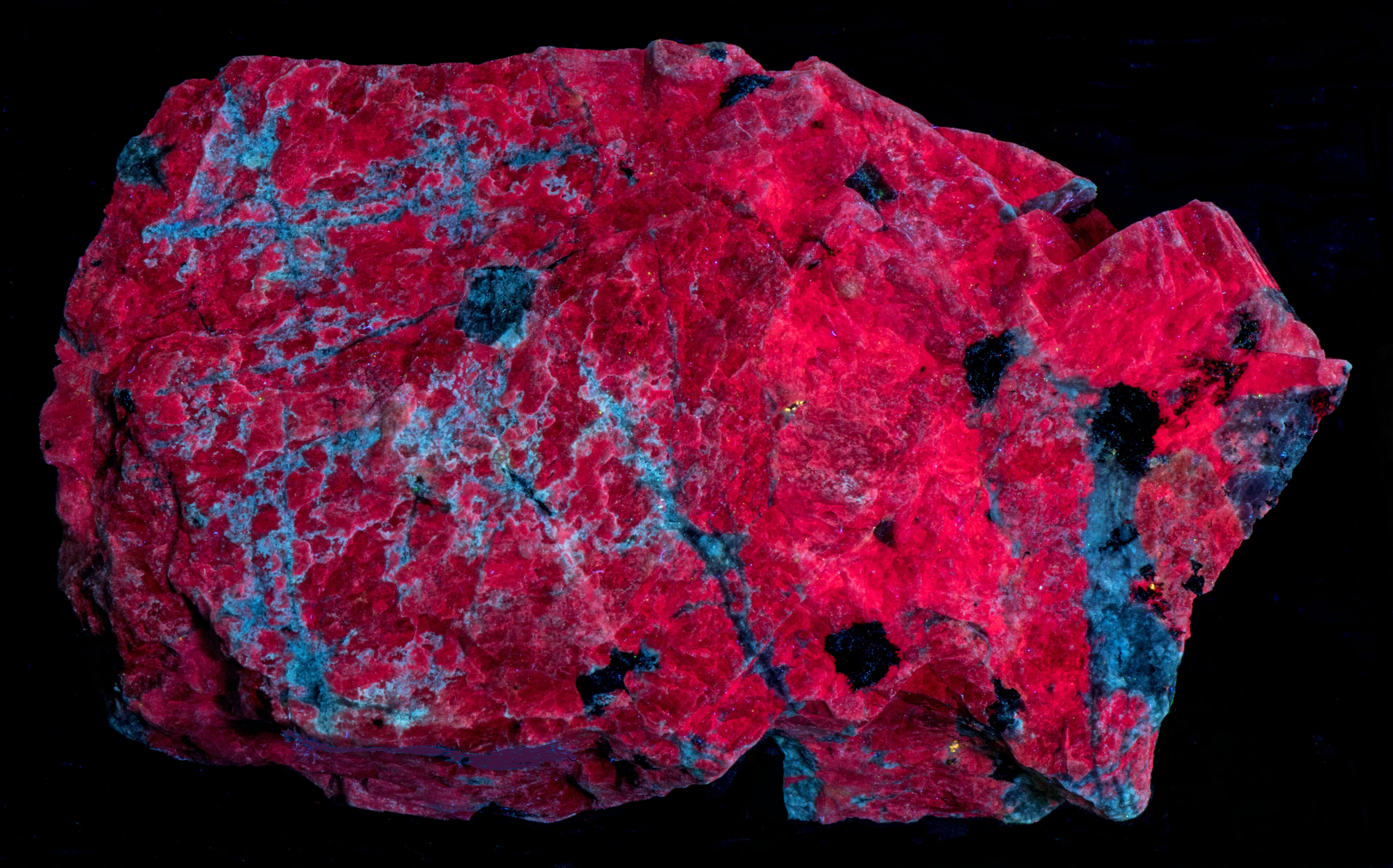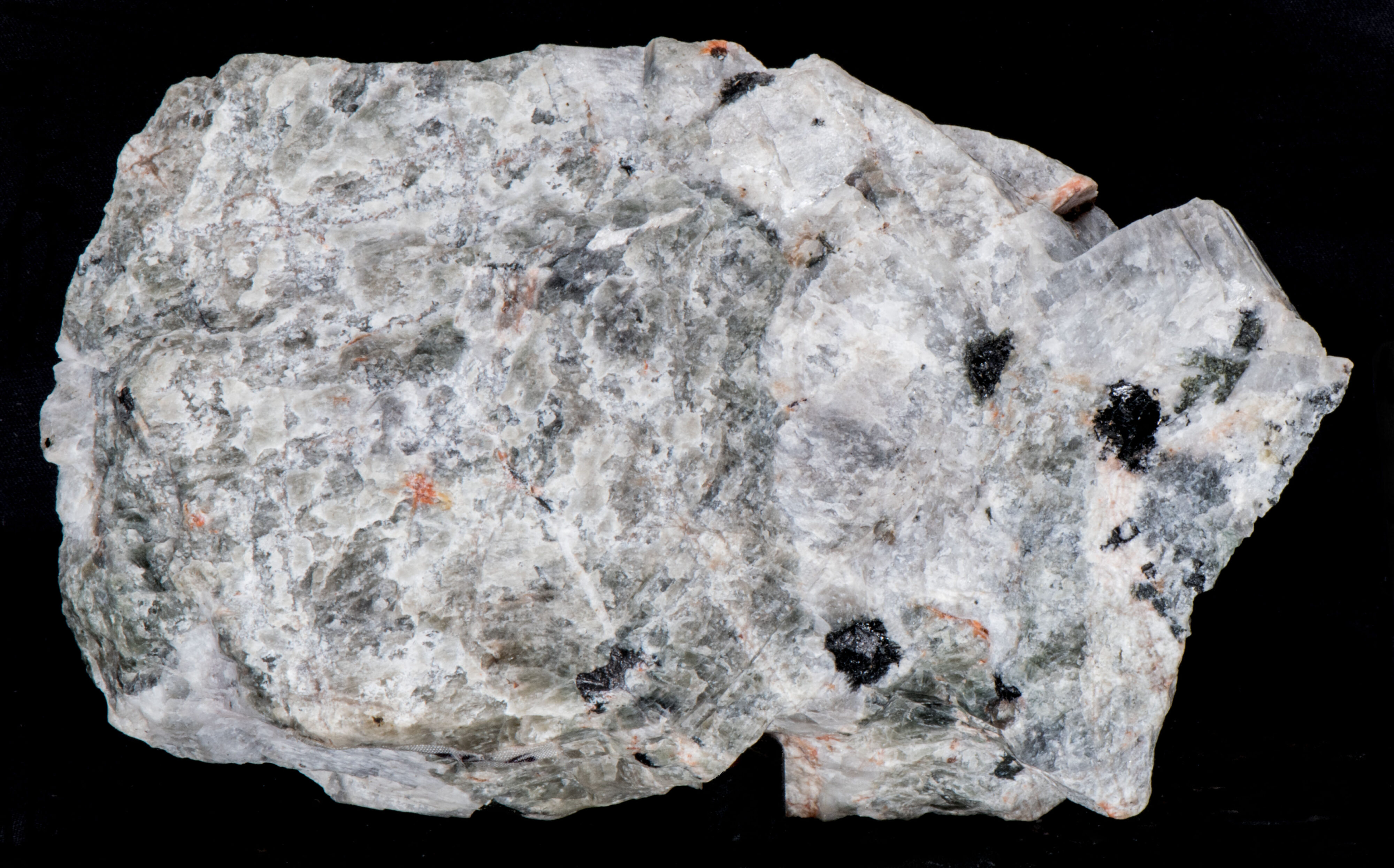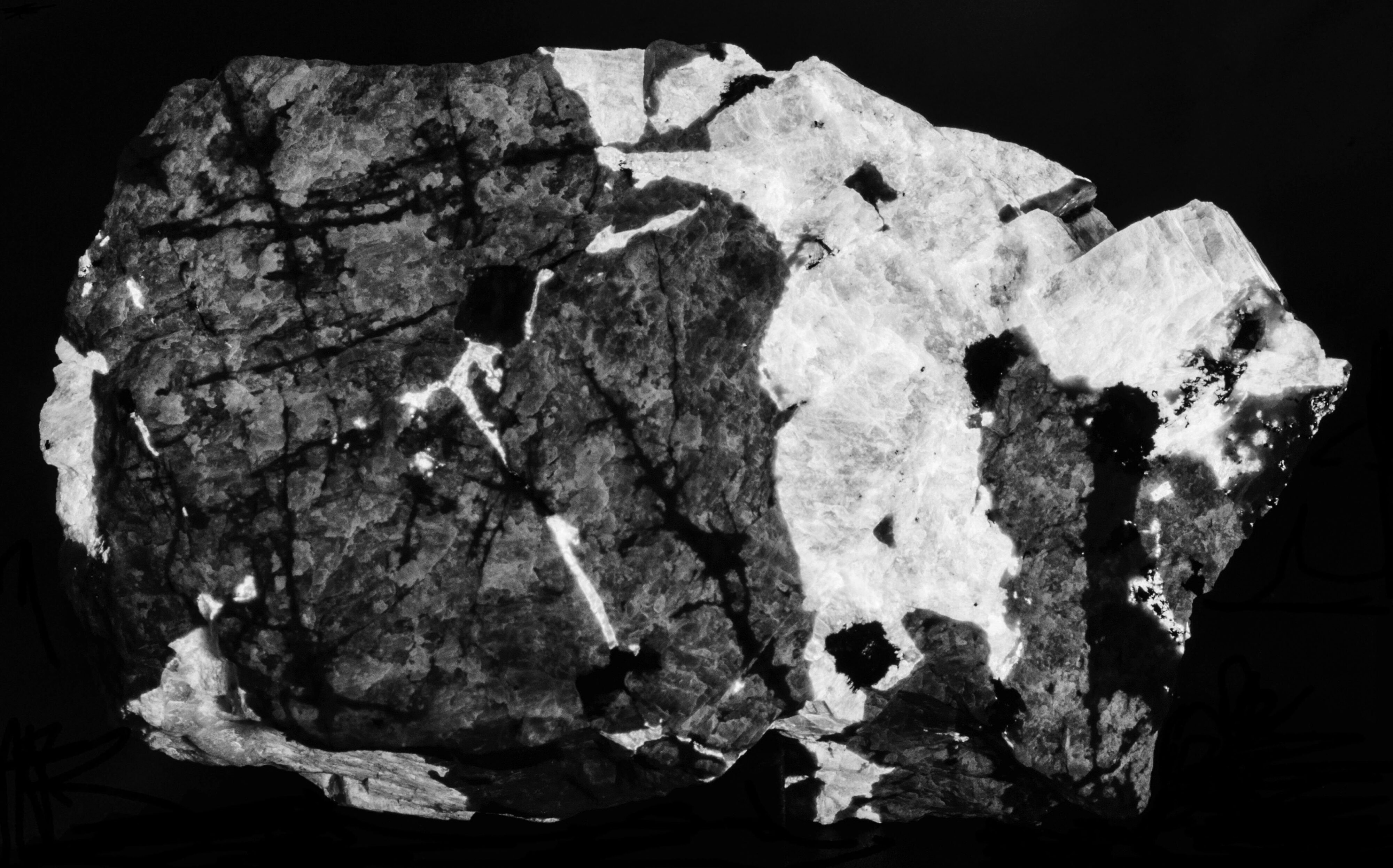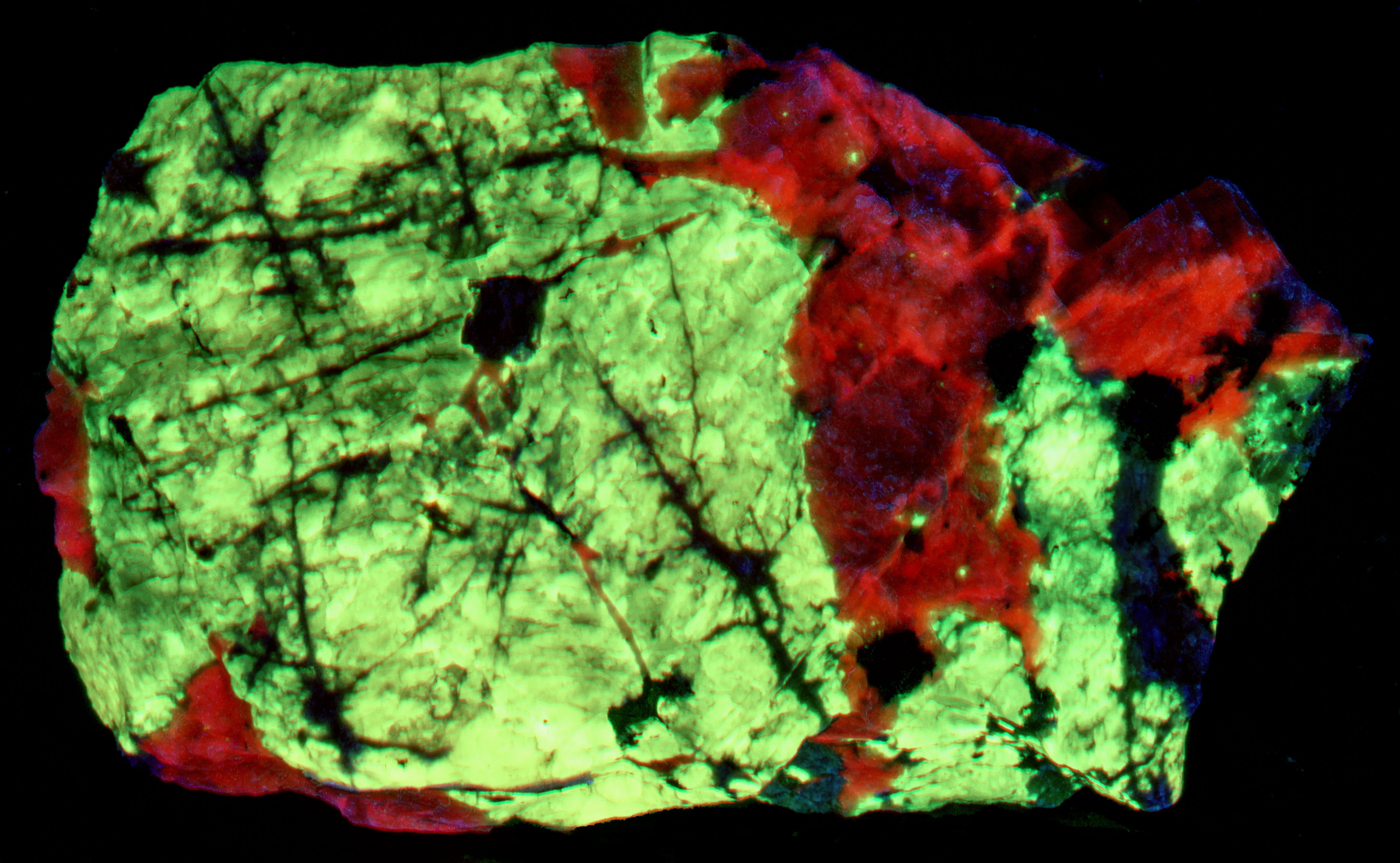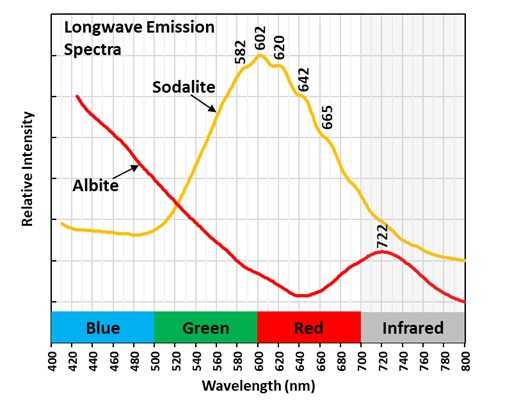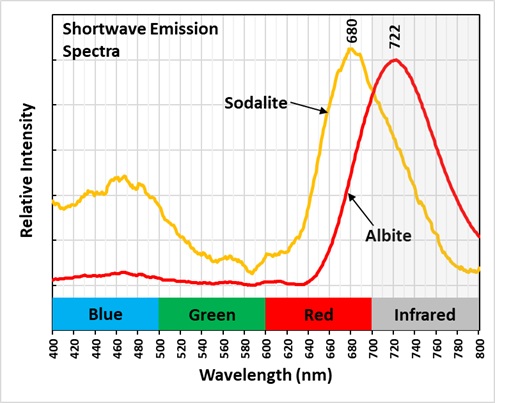Sodalite and Albite from Norway
Contributed by: Michael Crawford
Date: Aug 1st, 2025
Locality: Tvedalen, Larvik Commune, Vestfold, Norway (See on Mindat)
Size: 7 x 12 cm
Description:
A sodalite (Na4(Si3Al3)O12Cl) and albite (Na(AlSi3O8)) specimen from Tvedalen, Langesundfjord, Larvik, Vestfold, Norway. Sodalite has a framework of linked AlO4 and SiO4 tetrahedra in which Si and Al alternate on the tetrahedral sites. The linkage forms a cage that contains a centrally located anion (chlorine (Cl-)) surrounded by four cations (sodium (Na+)) in tetrahedral coordination. The sodalite structure allows a variety of anion and cation substitutions to occur. Some substitutions are different minerals of the sodalite group:
Hauyne -- Na3Ca(Si3Al3)O12(SO4)
Lazurite -- Na7Ca(Al6Si6O24)(SO4)(S3) · H2O
Nosean -- Na8(Al6Si6O24)(SO4) · H2O
Other substitutions are impurities that activate fluorescence. Two of these substitutions are present in this sodalite specimen. The yellow orange fluorescence under longwave UV light is activated by the disulfide ((S2)-) ion replacing chlorine. When longwave UV light strikes sodalite is causes the disulfide ion to vibrate. The vibration causes smaller peaks superimposed on the broad longwave emission peak. The maximum emission occurs at the 602 nm peak. These small peaks are spaced 18 to 23 nm apart.
The second impurity is ferric iron (Fe3+) substituting for aluminum. This substitution activates red and near infrared fluorescence under shortwave UV illumination. The emission spectrum is a broad peak with a maximum at 680 nm.
The albite in this specimen also has red fluorescence under shortwave UV illumination. Ferric iron (Fe3+) replacing aluminum activates the red fluorescence like sodalite. The two minerals are indistinguishable in the image of shortwave fluorescence. The shortwave emission peak of albite has its maximum in the near infrared at 722 nm. The shoulder of this peak extends into the visible red. The albite is also fluorescent under longwave UV light, but its fluorescence is much weaker and is overwhelmed by the bright sodalite fluorescence.
The two minerals can be distinguished in near infrared images of the shortwave fluorescence. Albite is much brighter in the monochrome image of 720 nm fluorescence. The color infrared image is composed of green and red visible bands and a near infrared band. The 720 nm image was used for the near infrared band because it has the greatest contrast for discriminating the sodalite and albite. Sodalite appears green and albite appears yellow in the color infrared image. The longwave albite fluorescence is also more apparent in the color infrared image. The albite is red and the sodalite is yellowish green in the longwave color infrared image.
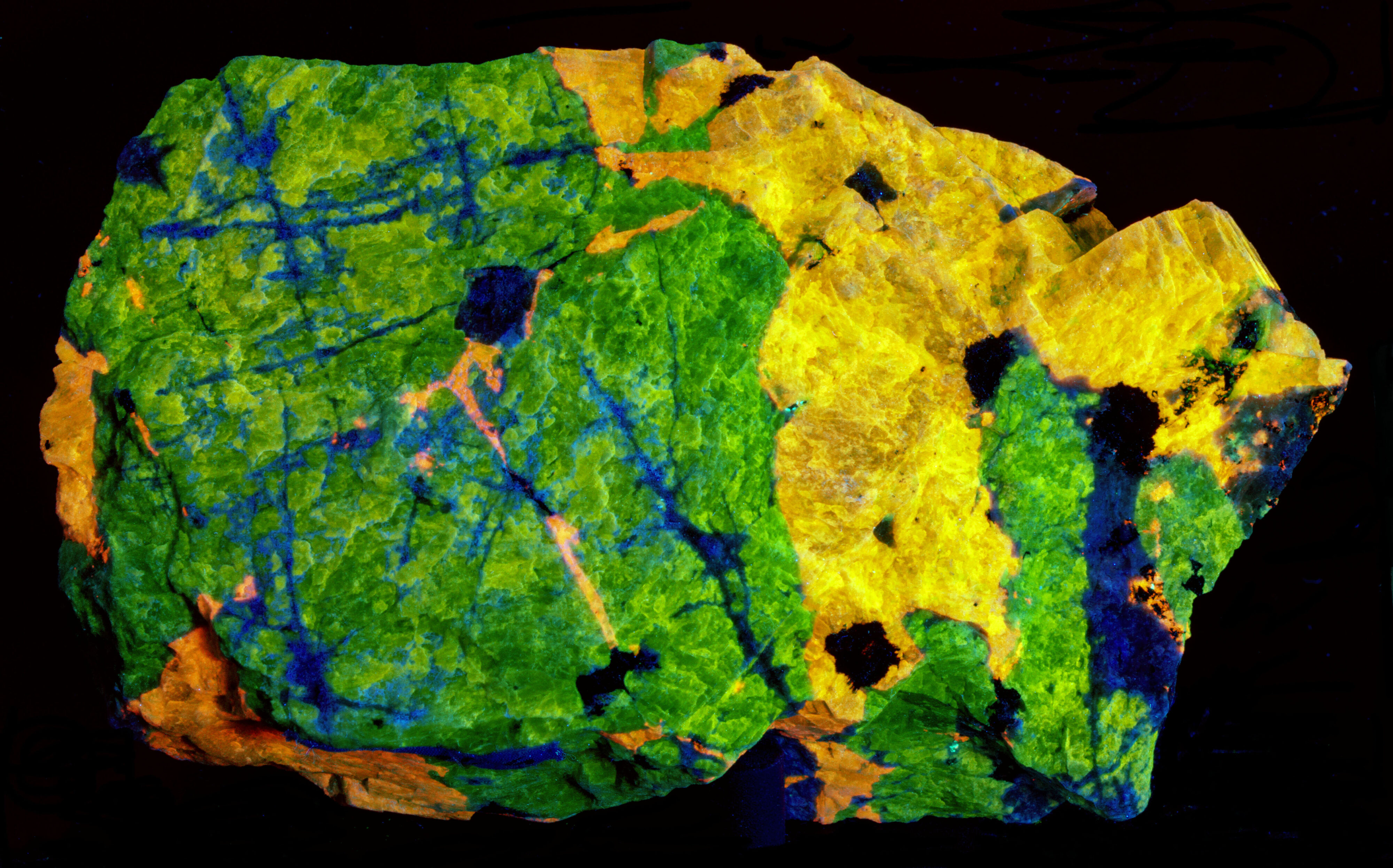
Summary of luminescence responses:
Sodalite (Mindat) (RRUFF)
- Fluorescence under Longwave (365nm LED) UV light: Orange
- Fluorescence under Shortwave (255nm LED) UV light: Red
- Fluorescence under Shortwave (255nm LED) UV light: Red

